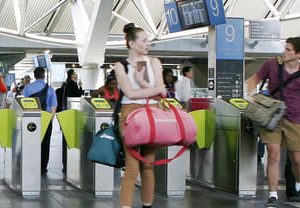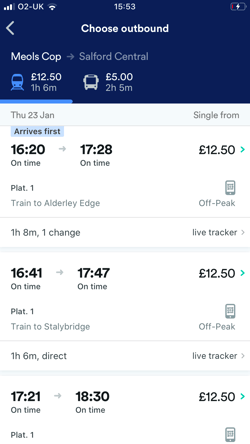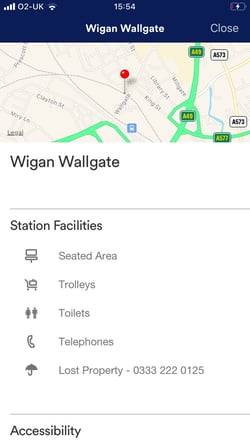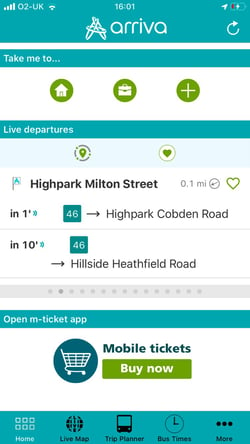Transforming Public Transit: Optimal User Experience and Safety Strategies
Within Australia, there are a variety of different public transportation methods; including trains, light rails, buses, trams, and ferries. The Australian Government, Department of Infrastructure, Transport, Regional Development and Communications has uncovered that throughout 2017-2018 within metropolitan areas there were 726 million heavy rail passenger movements alone, an increase from 10 years prior at just 588 million. These statistics are not including the other various modes of transport Australia has to offer.
With such large frequencies of people travelling via public transport, and statistics showing these numbers growing over time, it is important our public infrastructure system is built to withstand these sizable crowds. Exploring ways to improve the public transport system so that we also improve customer satisfaction and usage is of significant importance. Gunnebo have developed 4 key ways that the public transportation system could be enhanced.
In this article, we’re going to explore the different ways to improve public transport:
1. Giving Public Transport Road Priority
2. Reducing Fraud
3. Improving Customer Satisfaction & Safety
4. Enhancing Connectivity and Convenience

1. Giving Public Transport Road Priority
The efficiency of public transport could be largely improved by giving priority to buses, trams, and other public vehicles on the road.
This can be achieved through the implementation of more bus lanes, also known as ‘queue jump’ lanes. These lanes are separated from the rest of the road, usually by a thick white line, and can help to improve the reliability and safety of buses.
One of the main restrictions of public transport is the strict timetable that vehicles try to adhere to – even when there is unpredictably high traffic on the road.
The implementation of bus lanes removes this variable and allows more buses to stick to their schedule – meaning more people will be likely to trust and use public transport to get them where they need to be on time. These priority lanes can also help to reduce general road congestion, especially if they can be used by motorists outside of operating hours.
Another way to improve public transport is to give priority to public vehicles at traffic lights.
This strategy has already been implemented in Sydney, Australia – with the use of SCATS (Sydney Coordinated Adaptive Traffic System). SCATS uses predictive algorithms to predict the exact moment a bus is set to arrive at an intersection and then it turns the traffic light green before the bus arrives.
According to Transport for NSW, this has almost doubled the average bus speed through intersections, and has also increased customer satisfaction and levels of use on services.
2. Reducing Fraud
Customers want boarding to be as simple as possible, but it’s also important to have ticket barriers and gates in place to reduce fraud and maximise passenger safety. By implementing turnstiles such as tripod turnstiles or metro ticketing gates with integrated ticket validation and payment systems, you can reduce fraud on public transport.
Access control in public transport environments firstly serve the purpose of acting as both a deterrent and a physical barrier in practice by restricting movement unless authorisation has been granted. This has a knock-on effect when it comes to fraudulent behaviour and reduces the occurrence of illegal fare evasion and criminal activity.
By taking care to have a zero tolerance approach to fare evasion and social disorder, the broken windows theory can be applied here as it has been proven that uncivilised and antisocial behaviour is reduced by implementing these safety and security measures.
Automatic fare collection gates ensure transport operators see a faster passenger throughput to make the process more efficient – whilst also maintaining a high level of security to protect staff and passengers as well as important revenue streams.
3. Improving Customer Satisfaction & Safety
No doubt that with a rise of satisfied customers we would also see a rise in the use of public transport more regularly; in this case some essential features should function without any hitch.
 If all public transport gates are optimised and working efficiently in self-service format as they should, then staff are free to provide better customer service, concentrating on those who need additional help and answer travellers’ questions. It also facilitates a smooth and fast user flow and avoids any bottleneck in rush hours.
If all public transport gates are optimised and working efficiently in self-service format as they should, then staff are free to provide better customer service, concentrating on those who need additional help and answer travellers’ questions. It also facilitates a smooth and fast user flow and avoids any bottleneck in rush hours.
The more intuitive and user-friendly the gate design is, the more welcoming and agreeable it is for users. Busy passengers require simple but fast gate control that is easy to use and that responds immediately. This can reduce the stress of very busy periods such as rush hour, reducing anxiety and assisting travellers to feel calm and in control. Another benefit of self-service access control is that naturally, it also requires less labour overhead costs.
With higher traveller satisfaction having a knock-on effect on transport operator businesses, it is important to observe the ways in which services can be improved for higher engagement long-term.
4. Enhancing Connectivity and Convenience
The last but certainly not least of our ways to improve public transport is to enhance the ways in which travellers connect with their journey. A smartphone is now an essential commodity that everyone carries with them. Being able to harness its power to connect touchpoints and information to passenger activity improves the experience for users and operators alike.
Smart technology can allow customers to open gates with smartphone tickets, instead of worrying about purchasing a ticket from the machine. This reduces queue times even during rush hour, and allows users to easily pass through gates, regardless of their user type.
But it doesn’t end there. Smartphones can further improve public transport. New technology can also give station managers insightful data that they can use to improve the function of their station even further and help to keep customers safe. For example, by forecasting peak times or identifying gates in need of repair.
Many transport companies are now starting to implement apps that allow passengers to look up arrival and departure times, platform notices and other useful information.
One such example is Trainline, a service that covers all of the trains in the UK. Passengers can search for, and book trains and coaches:

This app also features a live tracker that helps people stay in the know, and information about each station:

Arriva, a bus provider, has a similar app that passengers can use to search for, book and track buses:

With populations increasing and people becoming more aware of their carbon footprint, the future looks bright for public transport. But in order to lure customers away from the comfort of their cars, public transport needs to be a desirable alternative.
For more information on how to improve public transport and increase customer satisfaction, take a look at our whitepaper.
